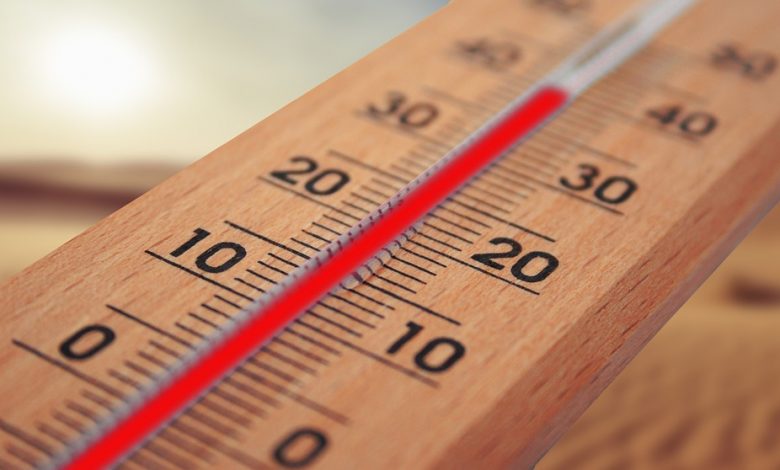Connexion: Take Advantage of Scorching Heat and Stormy Days


Scorchingly dry one month and soakingly wet the next… can Perak use these weather extremes to its advantage and at the same time lessen their intensity? Ipoh’s temperature has risen 6.75 degrees Celsius over the past 20 years — a soaring record not to be proud of.
At the same time, have a tall ladder ready for that hasty scramble to the rooftop when the rains come a-pouring.
Areas in Ipoh that have been swimming in flood waters include Tambun, Taman Cempaka, Kampung Sungai Rokam, and Gunung Rapat in the eastern part; Falim and Manjoi in the west; and Tasek, Bercham, and Taman Suria in the north.
July is a usually hot month, and there are two ways you can exploit the heat for your own good. First, go out in the sun during early morning or late afternoon to soak in Vitamin D and build up your immunity as well as warm your stiff neck or back. Second, harness solar energy to power your neighbourhood. Form a neighbourhood committee to arrange bulk supply of solar panels to be installed on as many rooftops as possible.
Negotiate a zero capex deal wherein the supplier installs the system at its own cost and gets paid by selling the electricity generated to TNB. You continue to pay your monthly electricity bill, but over time the cost will decline because there is reduced expenditure on fossil fuels.
Right now, only the Ipoh City Council is going all out on solar for government properties as it has the funds. Solar energy doesn’t fire the public imagination because you have to come up with RM20,000 (before discount) to purchase the system for your house. Hence, less than 1% of buildings are installed with solar photovoltaic systems.
We need to quickly push all residents and businesses into solar power with zero capex deals, because temperatures have touched 35 degrees Celsius briefly in a few local spots. During a heatwave, air-conditioning uses surges and this prompts more coal burning to keep up the power supply with the consequence of further global warming. It’s a vicious cycle that solar photovoltaic cells can help to break.
Going by the record, more and more countries will experience extremely hot weather during alternate years. If a tentacle of fire wraps itself tightly around your region, you will face drought conditions some months every year.
Intense heat waves coupled with high humidity in the Indian subcontinent has created wet-bulb temperatures killing thousands. In wet-bulb temperatures above 32 C, sweating no longer cools you down. When temperatures in the subcontinent hit 35 C, millions of outdoor workers had to give up their jobs and slip into further poverty. Schools were forced to close.
Tentacles of fire have enveloped Africa, North America, and South America with prolonged droughts turning once-fertile plains into semi deserts. In West Asia, the 5 sq km Lake Sawa renowned for its diversity of bird life has turned into a frying pan without a single drop of water in it. One tentacle is sweeping Australia with fiercer and more frequent bushfires. Why would Southeast Asia — or Malaysia — be spared?
But with the December deluge still a coffeeshop talking point, everyone is more concerned about excess water than excess heat. How do you capitalise on the floods? It’s free water a-plenty.
The skies don’t pour rain down every day. In a scorchingly dry month, the paddy crops in northern Perak wilt and supply dwindles. The optimum temperature for paddy cultivation is 24-34 C. If it soars to 35-37 C for a stretch of many days, rice output will drop by 50% and the price will double. When the dams run low, the prospect of water rationing runs high. Floodwaters must be harvested and stored for the dry season.
One suggestion is to create more retention ponds, but there are two problems with this solution: surface land is pricey and is prioritised for industries. The second problem is that badly maintained retention ponds will overflow and play a macabre role in flooding the neighbourhood.
The best long-term solution is to build vast underground tanks beneath school fields and public playgrounds. Drains serve as conduits for channeling floodwaters into the underground storage tanks. But you must have seen a recent video of two angry residents in Ipoh pointing to a long stretch of drain fully cluttered with debris. When the rains come, all that this drain can do is hold water for Aedes mosquitoes to breed.
In all towns in Malaysia, residents expect their councils to maintain the neighbourhood drains. This laid-back idea, relevant 30 years ago, is now completely outdated in the age of climate fury. China has long created a basic grassroot layer of governance — the neighbourhood committees — to ensure local service delivery. Their existence frees the city councils to handle much bigger duties.
To minimise flooding, the people can’t just leave governance to the elected or appointed officials. What’s the role of people? Six weeks ago, a Perak state government official asked for public cooperation in flood prevention and to help keep the neighbourhood drains unclogged. So, are we leaving the task of maintenance to a couple of volunteers as and when they feel like peeping into a drain and doing a video?
This is no way to fight climate change. The Government has to organise the people so that they are integrated into the governance machinery through autonomous neighbourhood committees that are assigned such roles as safeguarding public property and supervising hygiene. Let the committee run the show in selecting a drain cleaning contractor through open tender, setting the standards, and supervising the contractor.
Who will pay to build these underground storage tanks? Reverse the question and think of the enormous cost of not doing it: the December deluge caused losses amounting to RM6 billion, the Dewan Rakyat was told in March. The figures included losses of homes, vehicles, business premises as well as losses incurred by the manufacturing and agricultural sectors. The floods also damaged public infrastructure.
The expenditure on floodwater harvesting can be paid for by the savings in flood damage prevention. Perak can earn revenue too by selling harvested water to neighbours such as Penang and Selangor, which is expecting a drought in 2025. It is wise to develop climate resilience now, ahead of future disasters.
Disclaimer: The views and opinions expressed in this article are those of the author and do not necessarily reflect the official policy or position of Ipoh Echo


